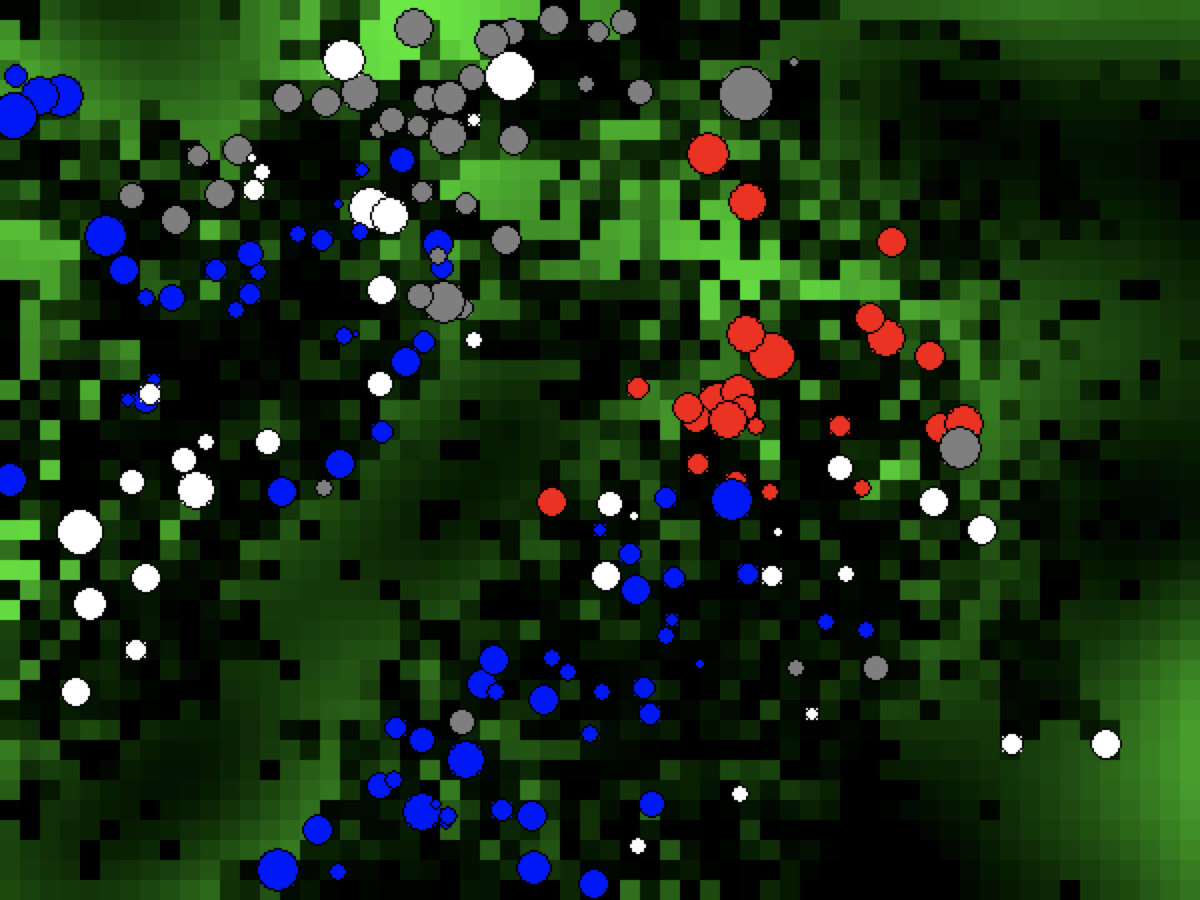(R)Evolution Simulator

(R)Evolution Simulator is a Python program which can be used to simulate the evolution of a species, the natural selection and many other natural processes.
What is it?
In every field of research, the usage of computers is growing very fast: thanks to them we can simulate natural environments, and it is possible to analyse and observe particular events in an easy way. Spatial flights, astronomical motions and ecosystems can be simulated using software, even as videogames.
Our project consists in a Python program simulating the processes of evolution of a species in a virtual world. Each creature behaves as in the real world: they look for the most comfortable habitat, they eat and reproduce themselves. On the contrary if they are in an uncomfortable zone, they will probably die.
Through the data gathered, we can observe the mechanisms of population genetics, the large-scale transmission of genetic traits and the natural selection of creatures of a species. The different traits (represented by numbers or Mendelian alleles) and their behaviour can be compared with the Hardy-Weinberg principle and the genetic drift.
Our creatures represent very well any specie of herbivores, whose simple behaviour, shows the sinusoidal trend of the population and the diversified distribution in the territory. The graphic interface, made with Python, permits to display everything in a very simple and efficient way.
The user interface
In the graphical user interface, chunks are represented as small squares and creatures as small circles. The dimension of circles may represent different features of the creatures. In the figure below, the bigger the circles, the more energy the corresponding creatures have at that moment, because they have just eaten some food.
Also the colour of the creatures shows different features of them:
- cyan/yellow represent the two possible sexes;
- red/grey-white/blue represent the different phenotypes of temp-resist. In particular, red creatures correspond to c phenotype (fitted for hotter zones), blue creatures correspond to l phenotype (cooler zones), white and grey creatures correspond respectively to ho- mozygous N phenotype and heterozygous N phenotype (fitted for mild portions);

